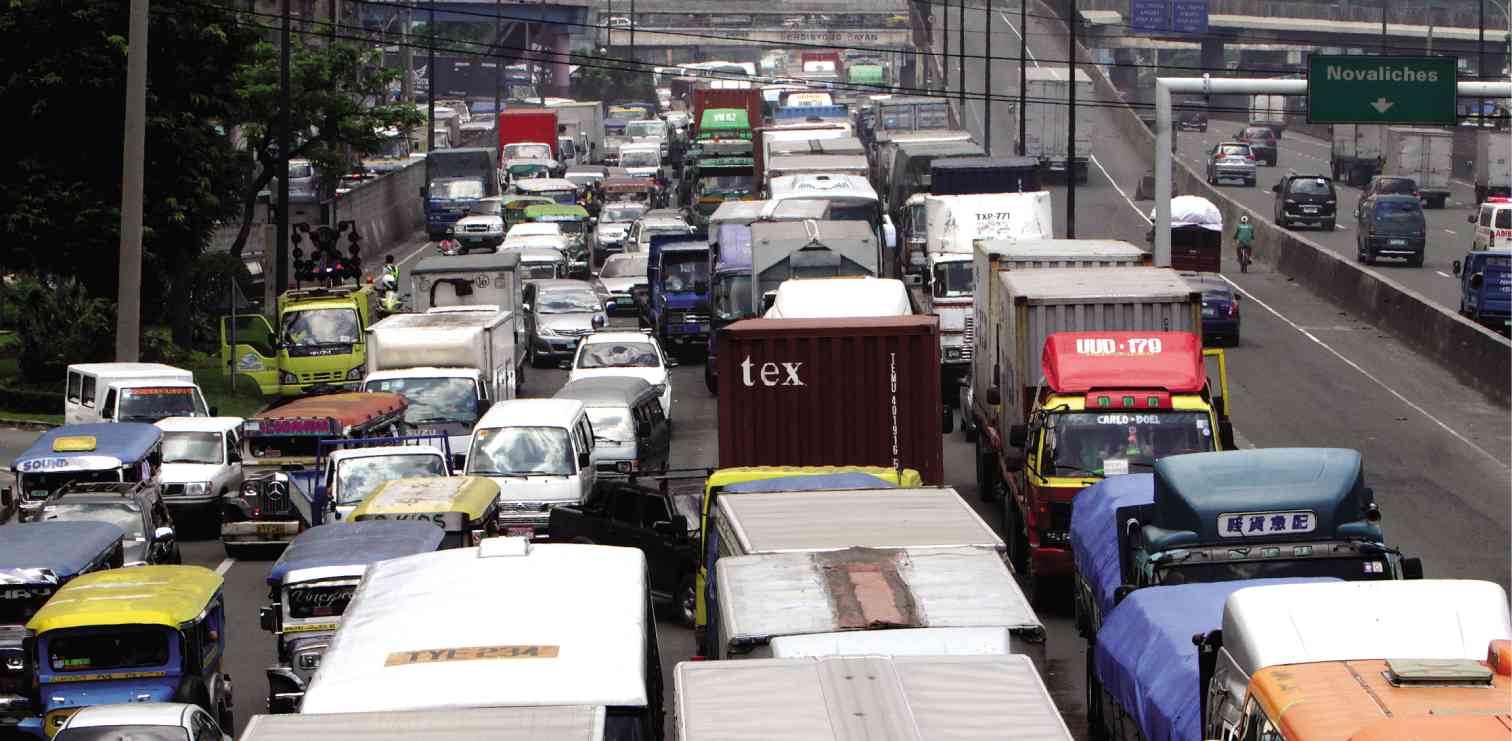Addressing the traffic crisis

TRAFFIC CONGESTION Heavy traffic along the North Luzon Expressway going to Manila and
A. Bonifacio highway in Quezon City due to the one-lane truck policy EDWIN BACASMAS
IN THE past eight weeks (June 30-Aug. 25), President Duterte and his administration have not come up with any action plan to address the traffic crisis in Metro Manila. One thing that he has done to help is not to accept invitations outside Malacañang so as not to further worsen the horrendous traffic.
There has been no executive action by the President on what could have been done immediately on the ground to improve the traffic congestion. There are, after all, government agencies with their respective mandates that can implement measures to effectively ease traffic on Edsa, C-5, Osmeña Avenue and other major thoroughfares in the metropolis.
The other thing that the President has done is to send Transportation Secretary Arthur Tugade to Congress to seek emergency powers to hasten the procurement process, avoid delays with right-of-way issues, and others. But there is no need to wait for these special powers for the executive branch under the President to act swiftly to alleviate the citizenry’s traffic woes.
The problem with the projects of the Department of Transportation is that they will not have an immediate impact on the traffic crisis. Why? Because the projects will take at least three years to finish even if emergency powers were granted the President. Thus, these projects are not expected to improve the flow of traffic in the next three years.
Consider the 22-kilometer MRT7 with 14 stations that started construction last April. It will take four years to complete, or until April 2020. Even if another MRT or LRT will be bid out within this year and awarded in January, it will be finished at about the same time as MRT7 if completed in three years under the emergency powers sought by the President.
Let us not forget that the transportation department is in charge only of air, sea and rail transport. This means the airports, seaports, railways and mass transit systems like the MRT and LRT. In terms of traffic engineering, it is only with the MRT and LRT that the transportation department can come in and really help. The only other one is the railway system running parallel to SLEx and Osmeña Avenue in Laguna and south of Metro Manila to Quirino Avenue and ending in Tutuban in Manila.
The transportation department cannot improve the traffic flow even if the number of new vehicles are regulated. There are already 2.5 million vehicles registered in the National Capital Region. Then there are hundreds of thousands of vehicles from the nearby provinces going to Metro Manila. Easily, there are close to three million vehicles in the NCR, which explains the horrendous traffic.
But the transportation department cannot effectively regulate the number of new vehicles. The present volume of private vehicles cannot be reduced for the simple reason of inadequate public transport. (An estimated 85 percent of motor vehicles are private vehicles for personal use, per the study of the Philippine Institute of Development Studies, a government think-tank.) The most it can do through the Land Transportation Office is not to renew the registration of vehicles that are not road-worthy. But here we are looking only at minimal reduction that may not even reach 25,000 vehicles, or 1.0 percent of the 2.5 million vehicles to be registered in NCR in the next five years.
The other mandate of the transportation department is regulation of public utility vehicles through the Land Transportation Franchising and Regulatory Board. But only the illegal or colorum buses and jeepneys can be removed from the roads, and they run to only a few thousand units at most.
The harm that buses and jeepneys do is their indiscriminate loading and unloading of passengers that impede the traffic flow. They will stop just anywhere, with impunity, hence the need for designated bus and jeepney stops and effective traffic enforcement. There should be no mercy in enforcing traffic rules and regulations!
One agency that can help address the traffic crisis is the Department of Public Works and Highways. The DPWH is in charge of the national roads in Metro Manila and expressways, like NLEx, SLEx and Cavitex, through the Toll Regulatory Board under its supervision. The DPWH can build new roads and bridges that can serve as alternative routes to avoid the traffic areas.
Lastly, the Metro Manila Development Authority has the mandate on traffic management, but has not been effective both in traffic enforcement and engineering. During the last year of the Aquino administration, the Office of the President deputized the Philippine National Police’s Highway Patrol Group to take over Edsa from the MMDA due to the traffic crisis that has emerged after six years of a do-nothing administration.
Going back to what can be done immediately, the President can issue an administrative order establishing a unified command for traffic management in Metro Manila composed of the MMDA, DWPH, and the Departments of Transportation, of Interior and Local Government, and of Justice. The DILG is needed due to the involvement of local government units and the PNP-HPG in traffic enforcement. The DOJ is included to immediately address the legal issues.
Tugade can be appointed chair of the Unified Command for Traffic Management. A full-time executive director can implement its decisions. The chair can make decisions on matters of exigency, acting in behalf of the President.
This interagency task force should be convened immediately to address the traffic crisis, while waiting for Congress to grant the special powers sought by the President.
Ricardo B. Ramos is executive director of Citizens Infrastructure Integrity WatchDog.
RELATED VIDEOS















